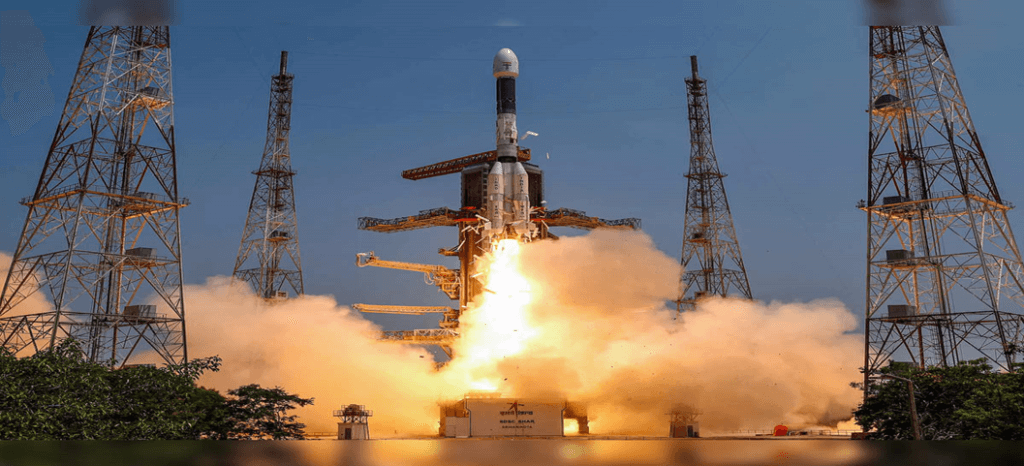The Chandrayaan-3 Mission is a significant step in India’s space exploration endeavors. Building upon the success of Chandrayaan-2, this mission aims to demonstrate advanced technologies and safely land a spacecraft on the south pole of the moon. By studying the lunar surface and its properties, the mission seeks to expand our understanding of Earth’s natural satellite.
Mission Objectives:
The primary objective of Chandrayaan-3 is to showcase the complete capability of landing and roving on the lunar surface. The mission aims to achieve the following goals:
- Safe landing: Chandrayaan-3 will demonstrate the ability to perform a controlled and secure landing on the lunar surface, specifically targeting the challenging south pole region.
- Roving capabilities: The mission will showcase the deployment and functionality of a rover on the lunar surface, enabling the exploration of a wider area and gathering valuable data.
Three Composite Modules:
Chandrayaan-3 consists of three essential modules that work together to accomplish the mission’s objectives:
- Propulsion module: This module carries the lander and rover configuration to a lunar orbit of 100 km. It provides the necessary thrust and propulsion during the mission.
- Lander module: The lander contains several scientific payloads designed to study various aspects of the moon’s surface. These payloads include:
- Chandra’s Surface Thermophysical Experiment: Measures thermal conductivity and temperature to understand the moon’s heat distribution.
- Instrument for Lunar Seismic Activity: Analyzes seismicity around the landing site, shedding light on the moon’s internal structure.
- Langmuir Probe: Estimates plasma density and variations in the lunar surface’s plasma environment.
- Rover module: The rover carries specialized instruments to study the elemental composition near the landing site. The payloads include:
- Alpha Particle X-ray Spectrometer: Enables the analysis of elemental composition by measuring alpha particles and X-rays.
- Laser Induced Breakdown Spectroscopy: Utilizes laser-induced sparks to identify the chemical composition of lunar samples.
Scientific Instruments and Payloads:
Chandrayaan-3 is equipped with a range of scientific instruments to gather data and conduct research on the moon’s surface. The payloads include:
- Spectro-polarimetry of Habitable Planet Earth (SHAPE): This payload studies Earth’s spectral and polarimetric measurements from the lunar orbit, providing valuable insights into our home planet.
- Passive Laser Retroreflector Array: This payload, provided by NASA, enables lunar laser ranging studies by reflecting laser beams back to Earth, aiding in precise measurements of the moon’s distance.
Launch and Execution:
The Chandrayaan-3 spacecraft will be launched from Sriharikota using the powerful LVM3 (Launch Vehicle Mark-III), formerly known as GSLV Mk III. This launch vehicle provides the necessary thrust and propulsion to propel the spacecraft into space and set it on its trajectory towards the moon.

Important Points:
- 🌙 Objective: Demonstrate safe landing and roving on the moon’s south pole.
- 🚀 Three Composite Modules: Propulsion, lander, and rover.
- 📡 Scientific Instruments: Study lunar regolith properties, seismicity, plasma environment, and elemental composition.
- 🛰️ Propulsion Module: Carries lander and rover to a lunar orbit of 100 km.
- 🔭 Spectro-polarimetry of Habitable Planet Earth (SHAPE): Payload to study Earth’s measurements from the lunar orbit.
- 📊 Lander Payloads:
- 🌡️ Chandra’s Surface Thermophysical Experiment: Measures thermal conductivity and temperature.
- 🌍 Instrument for Lunar Seismic Activity: Analyzes seismicity around the landing site.
- ⚡ Langmuir Probe: Estimates plasma density and variations.
- 🔭 Passive Laser Retroreflector Array: Aids lunar laser ranging studies.
- 🚗 Rover Payloads:
- 🧪 Alpha Particle X-ray Spectrometer: Analyzes elemental composition.
- 💥 Laser Induced Breakdown Spectroscopy: Identifies chemical composition.
- 🚀 Launch: LVM3 (GSLV Mk III) from Sriharikota.
Why In News
The Chandrayaan-3 Mission, representing a pivotal advancement in India’s space exploration pursuits, embarks on the ambitious goal of showcasing cutting-edge technologies and achieving a precise lunar touchdown at the unexplored southern pole. By leveraging the triumphs of its predecessor, Chandrayaan-2, this mission paves the way for further scientific breakthroughs and reinforces India’s commitment to unraveling the mysteries of the moon.
MCQs about The Chandrayaan-3 Mission
-
Which module of the Chandrayaan-3 Mission is responsible for carrying the lander and rover configuration to a lunar orbit?
A. Propulsion module
B. Lander module
C. Rover module
D. Spectro-polarimetry module
-
Which scientific instrument is used to measure the thermal conductivity and temperature on the moon’s surface?
A. Chandra’s Surface Thermophysical Experiment
B. Instrument for Lunar Seismic Activity
C. Langmuir Probe
D. Alpha Particle X-ray Spectrometer
-
From where will the Chandrayaan-3 spacecraft be launched?
A. Cape Canaveral
B. Baikonur Cosmodrome
C. Sriharikota
D. Jiuquan Satellite Launch Center
Boost up your confidence by appearing our Weekly Current Affairs Multiple Choice Questions
![]()


